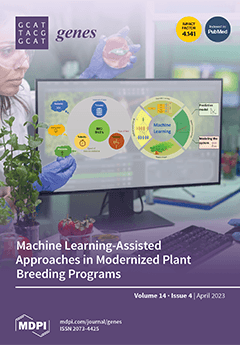Clear-cell renal cell carcinoma (ccRCC) is the most common and aggressive type of renal-cell carcinoma (RCC). Sperm-associated antigen 9 (
SPAG9) has been reported to promote the progression of a variety of tumors and is thus a potential prognostic marker. This study combined a bioinformatics analysis with an experimental validation, exploring the prognostic value of
SPAG9 expression in ccRCC patients and the possible underlying mechanisms. The
SPAG9 expression was associated with a poor prognosis in pan-cancer patients, but with a good prognosis and slow tumor progression in ccRCC patients. To explore the underlying mechanism, we investigated the roles of
SPAG9 in ccRCC and bladder urothelial carcinoma (BLCA). The latter was chosen for comparison with ccRCC to represent the tumor types in which
SPAG9 expression suggests a poor prognosis. The overexpression of
SPAG9 increased the expression of autophagy-related genes in 786-O cells but not in HTB-9 cells, and
SPAG9 expression was significantly correlated with a weaker inflammatory response in ccRCC but not in BLCA. Through an integrated bioinformatics analysis, we screened out seven key genes (
AKT3, MAPK8, PIK3CA, PIK3R3, SOS1, SOS2, and
STAT5B) in this study. The correlation between
SPAG9 expression and ccRCC prognosis depends on the expression of key genes. Since most of the key genes were PI3K-AKT-pathway members, we used the PI3K agonist 740Y-P to stimulate the 786-O cells, to mimic the effect of key-gene overexpression. Compared with the Ov-
SPAG9 786-O cells, the 740Y-P further increased the expression of autophagy-related genes by more than twofold. Moreover, we constructed a nomogram based on
SPAG9/key genes and other clinical features, which was proven to have some predictive value. Our study found that
SPAG9 expression predicted opposite clinical outcomes in pan-cancer and ccRCC patients, and we speculated that
SPAG9 suppresses tumor progression by promoting autophagy and inhibiting inflammatory responses in ccRCC. We further found that some genes might cooperate with
SPAG9 to promote autophagy, and that these were highly expressed in the tumor stroma and could be represented by key genes. The
SPAG9-based nomogram can help to estimate the long-term prognosis of ccRCC patients, indicating that
SPAG9 is a potential prognostic marker for ccRCC.
Full article






